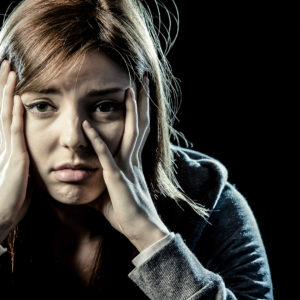Everyone in this country is experiencing the mental health impacts of COVID-19 in one way or another. Even before the pandemic, nearly 14.2 million Americans had a serious mental illness each year, such as schizophrenia, bipolar disorder, and major depressive disorder. It might surprise you to know that if you live in a rural area, you are more likely to have a serious mental illness than if you live in the city or suburbs. And, while access to care is a universal problem, you are also more likely to encounter serious obstacles to getting treatment if you live in a rural area.
When considering the provision of rural care, and really all health care, we know that the people in those communities know what works best. In rural communities, the mental health workforce delivers evidence-based care, tailored for the population, resources, and workforce available. So to pool their shared knowledge, as national mental health organizations, we recently convened and listened to mental health care clinicians, administrators, and staff from rural and remote communities across the country to learn about how they were working through the issues and where they could use additional assistance.
The problems they brought up were availability, accessibility, and acceptability of care. They told us that in rural areas it can be hard for individuals to find a mental health clinician, especially one who takes insurance. We heard about the impact of poverty: that people with serious mental illness would sometimes run into issues around finding a ride to appointments, or someone to care for their children. To boot, broadband internet isn’t as widespread as in more populated areas, making video telehealth less than helpful for some people.
Finally, mental health stigma, while pervasive all over the country, has its own impacts in small communities. In places where news often travels fast, where everyone knows everyone, and where the ethos is “pull up your own bootstraps,” people fear that getting help or even talking about it might show weakness.
The bottom line is that solutions that work well in urban communities might not transfer perfectly to rural communities. That’s why it’s powerful to listen to the care teams living in these communities, who understand the actual problems people face as well as the workarounds that will achieve the best outcomes.
They told us:
- Communities ensure availability of care. It works well when local primary care providers have an understanding of mental health, or ideally, access to a psychiatrist in something like the Collaborative Care model. It’s powerful when local EMTs and other first-line responders are engaged, so that they and other community members are ready to respond when people face mental health crises, like suicidal ideation.
- Rural communities are being creative in their approaches to making treatment accessible and meeting rural patients where they are. Mobile mental health clinics are reaching individuals without readily available transportation and who are miles away from clinics. Stronger broadband can increase the usage of telehealth when it’s an option. Until then, routine access via telephone is being used to minimize travel and overcome broadband issues.
- Third and finally, overcoming stigma and increasing the acceptability of mental health services won’t come from just a celebrity tweeting their feelings (although it doesn’t hurt). In rural and remote areas, community leaders, for example, faith leaders, are leading the charge by talking with their neighbors about these services. Overcoming stigma is also coming in the form of sharing experiences with care via conversations in cafes and barbershops.
The focus groups and interviews painted a picture of staff, administrators, and clinicians who are working in rural and remote communities every day to innovate and deliver care to the one in five Americans who live in those areas. We can all take a lesson from that practicality and dedication, and we hope some of the lessons we learned will inform policymakers and our colleagues across mental health about what truly works to save lives.

